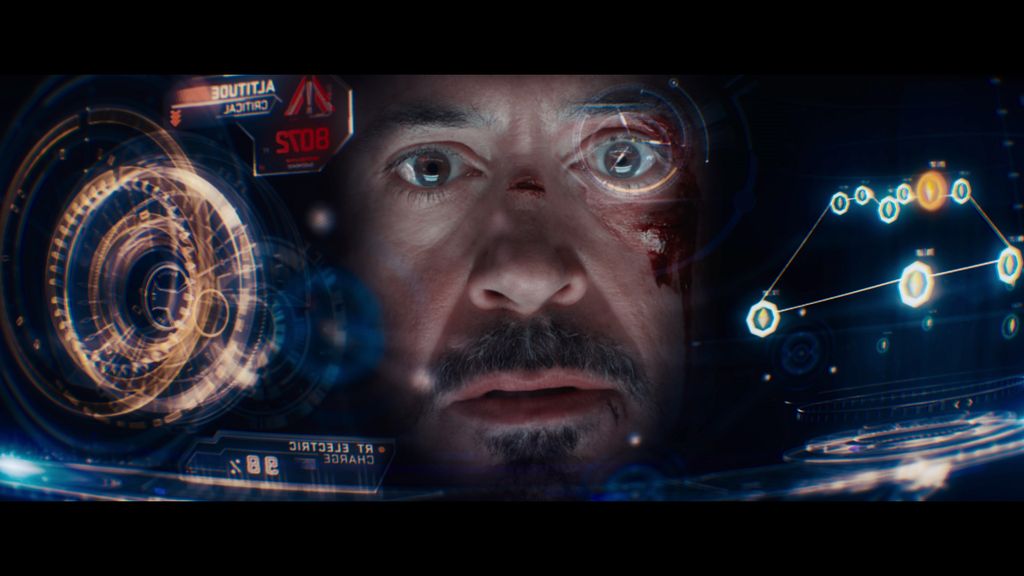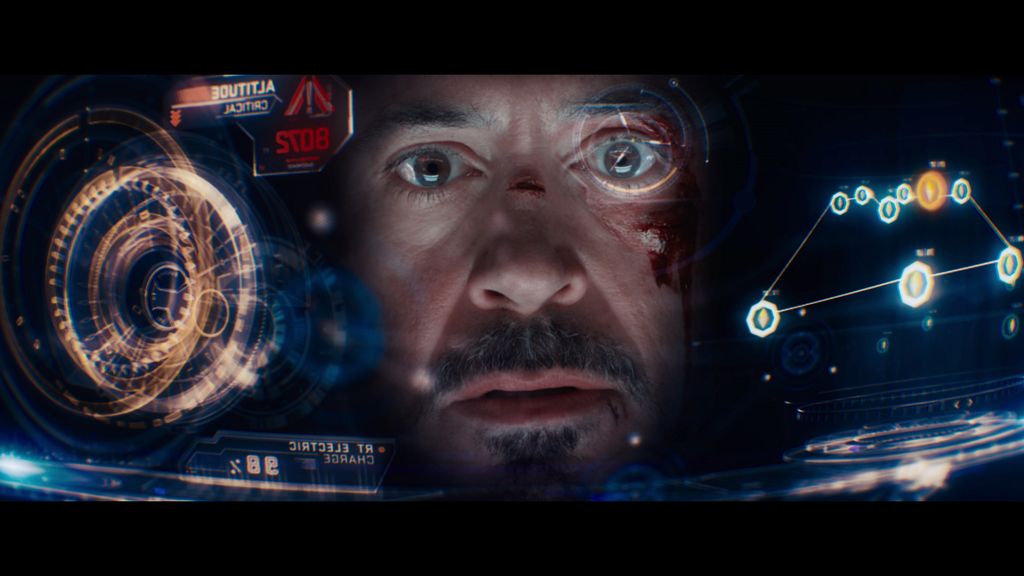
Iron Man 3 pits star Robert Downey Jr. (Tony Stark/Iron Man) the “…brash-but-brilliant industrialist against an enemy whose reach knows no bounds. When Stark finds his personal world destroyed at his enemy's hands, he embarks on a harrowing quest to find those responsible…” (source Marvel Studios). In its opening weekend on May 3, the film earned the second-best box-office opening weekend in the U.S. of all time behind The Avengers and continues to ‘wow’ audiences worldwide.
The Cantina Creative VFX team members, including Cantina Co-founder and Creative Director Stephen Lawes; Co-founder and VFX Producer Sean Cushing; and Cantina VFX Supervisor Venti Hristova, worked directly with Marvel Studios’ Iron Man 3 Visual Effects Supervisor Chris Townsend and Visual Effects Producer Mark Soper. Cantina Creative was tasked with designing the elaborate 3D heads up displays (HUDs) – a virtual graphical interface that Iron Man sees from within the helmet environment of his armored suits that communicate essential data and statistics ranging from his physical condition to weapon and navigational diagnostics – with an emphasis on the new ultra high tech Mark 42 suit.
Lawes explains that Cantina Creative designed HUD and interface graphics using CINEMA 4D for Iron Man 2 and for Marvel’s The Avengers. Due to major engineering advances in the Iron Man 3 suits, including the ability for Stark to access the suits via remote control coupled with delivering shots in 3D stereo, the VFX team needed to step-up the evolution of the HUD 3D graphics to augment Stark’s onscreen identity and action-packed performance.
“Townsend provided creative input and suggested aiming the new HUD design towards a more 3D photo-real, holographic approach as opposed to the design language of the previous films – 2D graphic elements in 3D space. This new design direction emphasized the beauty of the volumetric lights projected into space using optical flares (a design motif drawn from the ‘External HUD’ hologram in the movie) and the textured reflections generated by the light interaction of the HUD widgets from the ambient environment. This took the graphics away from a purely text-functional level to a more organic holographic world,” Hristova says.
To meet the sheer technical complexities and stereo workflow requirements in the film head-on, Cantina Creative developed an advanced stereo rig, similar to the one used in The Avengers, built in Adobe After Effects, and then exported into CINEMA 4D for animating 3D objects such as the suit, helicopters, and dimensional navigation graphics seen within the HUD.
“Marvel provided us with VFX plates of Robert Downey Jr.’s performance as Iron Man in the suit,” Lawes adds. “His head movements were motion tracked to help define the motion and action beat needed in each sequence and then composited into all our graphics sequences so that we could mirror Downey’s moves as accurately as possible.
“The beauty of using CINEMA 4D is that its built-in stereo capabilities let us work fully in three-dimensional space so that we always knew how far the HUD graphics needed to be from Stark’s head to successfully push the boundaries of his point-of-view (POV) beyond the helmet,” Lawes says. “We were able to import left and right eye cameras from After Effects into CINEMA 4D and create multilayered lighting and textural HUD effects that could be rendered out quickly in various passes. The software’s powerful Sketch and Toon non-photrealistic rendering tools also gave us creative latitude to do things like vary line weights in space to communicate more depth and dimensionality than in the previous Iron Man films.”
For Hristova, one of the most significant creative challenges was the initial Mark 42 boot-up sequence. “Many of the elements, including a miniature version of the suit and the holographic helmet were generated and rendered from CINEMA 4D. These graphics had true 3D depth which heightened the stereo viewing experience as well as the interactive light qualities that are both photo-real and immersive.”
Other artists and designers working with Cantina Creative on Iron Man 3 included Alan Torres, Leon Nowlin, Matt Eaton, Aaron Eaton, Lukas Weyandt, Jon Ficcadenti, Johnny Likens and Jayse Hansen.
About MAXON
Headquartered in Friedrichsdorf, Germany, MAXON Computer is a developer of professional 3D modeling, painting, animation and rendering solutions. Its award-winning CINEMA 4D and BodyPaint 3D software products have been used extensively to help create everything from stunning visual effects in top feature films, TV shows and commercials, cutting-edge game cinematics for AAA games, as well for medical illustration, architectural and industrial design applications. MAXON has offices in Germany, USA, United Kingdom, France, Japan and Singapore. MAXON products are available directly from the web site and its worldwide distribution channel. Specially priced learning editions of the company’s software solutions are also made available to educational institutions. For additional information on MAXON visit www.maxon.net.

